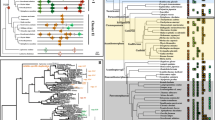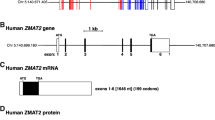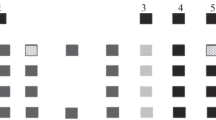Abstract
The origin of new structures and functions is an important process in evolution. In the past decades, we have obtained some preliminary knowledge of the origin and evolution of new genes. However, as the basic unit of genes, the origin and evolution of exons remain unclear. Because young exons retain the footprints of origination, they can be good materials for studying origin and evolution of new exons. In this paper, we report two young exons in a zinc finger protein gene of rodents. Since they are unique sequences in mouse and rat genome and no homologous sequences were found in the orthologous genes of human and pig, the young exons might originate after the divergence of primates and rodents through exonization of intronic sequences. Strong positive selection was detected in the new exons between mouse and rat, suggesting that these exons have undergone significant functional divergence after the separation of the two species. On the other hand, population genetics data of mouse demonstrate that the new exons have been subject to functional constraint, indicating an important function of the new exons in mouse. Functional analyses suggest that these new exons encode a nuclear localization signal peptide, which may mediate new ways of nuclear protein transport. To our knowledge, this is the first example of the origin and evolution of young exons.
Similar content being viewed by others
References
Li, X., Yang, S., Peng, L. X. et al., Origin and evolution of new genes, Chinese Science Bulletin, 2004, 49(16): 1219–1225.
Long, M., Betran, E., Thornton, K. et al., The origin of new genes: Glimpses from the young and old, Nat. Rev. Genet., 2003, 4(11): 865–875.
Nekrutenko, A., Li, W. H., Assessment of compositional heterogeneity within and between eukaryotic genomes, Genome Res., 2000, 10(12): 1986–1995.
Rogalla, P., Kazmierczak, B., Flohr, A. M. et al., Back to the roots of a new exon—the molecular archaeology of a SP100 splice variant, Genomics, 2000, 63(1): 117–122.
Letunic, I., Copley, R. R., Bork, P., Common exon duplication in animals and its role in alternative splicing, Hum. Mol. Genet., 2002, 11(13): 1561–1567.
Ast, G., How did alternative splicing evolve? Nat. Rev. Genet., 2004, 5(10): 773–782.
Makalowski, W., Mitchell, G. A., Labuda, D., Alu sequences in the coding regions of mRNA: A source of protein variability, Trends Genet, 1994, 10(6): 188–193.
Kondrashov, F. A., Koonin, E. V., Evolution of alternative splicing: Deletions, insertions and origin of functional parts of proteins from intron sequences, Trends Genet, 2003, 19(3): 115–119.
Wang, W., Brunet, F. G., Nevo, E. et al., Origin of sphinx, a young chimeric RNA gene in Drosophila melanogaster, Proc. Natl. Acad. Sci. USA, 2002, 99(7): 4448–4453.
Wang, W., Yu, H., Long, M., Duplication-degeneration as a mechanism of gene fission and the origin of new genes in Drosophila species, Nat. Genet, 2004, 36(5): 523–527.
Looman, C., Abrink, M., Mark, C. et al., KRAB zinc finger proteins: An analysis of the molecular mechanisms governing their increase in numbers and complexity during evolution, Mol. Biol. Evol., 2002, 19(12): 2118–2130.
Shannon, M., Hamilton, A. T., Gordon, L. et al., Differential expansion of zinc-finger transcription factor loci in homologous human and mouse gene clusters, Genome Res., 2003, 13(6A): 1097–1110.
Urrutia, R., KRAB-containing zinc-finger repressor proteins, Genome Biol., 2003, 4(10): 231.
Jordan, I. K., Wolf, Y. I., Koonin, E. V., No simple dependence between protein evolution rate and the number of protein-protein interactions: Only the most prolific interactors tend to evolve slowly, BMC Evol. Biol., 2003, 3: 1.
Kumar, S., Tamura, K., Nei, M., MEGA3: Integrated software for Molecular Evolutionary Genetics Analysis and sequence alignment, Brief Bioinform., 2004, 5(2): 150–163.
Rozas, J., Sánchez-DelBarrio, J. C., Messeguer, X. et al., DnaSP, DNA polymorphism analyses by the coalescent and other methods, Bioinformatics, 2003, 19: 2496–2497.
Tajima, F., Statistical method for testing the neutral mutation hypothesis by DNA polymorphism, Genetics, 1989, 123(3): 585–95.
Fu, Y. X., Li, W. H., Statistical tests of neutrality of mutations, Genetics, 1993, 133(3): 693–709.
Zhou, Q., Wang, W., Detecting natural selection at the DNA level, Zoological Research, 2004, 25(1): 73–80.
O’Brien, S. J., Eizirik, E., Murphy, W. J., Genomics. On choosing mammalian genomes for sequencing, Science, 2001, 292(5525): 2264–2266.
Springer, M. S., Murphy, W. J., Eizirik, E. et al., Placental mammal diversification and the Cretaceous-Tertiary boundary, Proc. Natl. Acad. Sci. USA, 2003, 100(3): 1056–1061.
Cokol, M., Nair, R., Rost, B., Finding nuclear localization signals, EMBO Rep., 2000, 1(5): 411–415.
Dingwall, C., Laskey, R. A., Protein import into the cell nucleus, Annu. Rev. Cell Biol., 1986, 2: 367–390.
Fontes, M. R., The, T., Toth, G. et al., Role of flanking sequences and phosphorylation in the recognition of the simian-virus-40 large T-antigen nuclear localization sequences by importin-alpha, Biochem. J., 2003, 375: 339–349.
Moede, T., Leibiger, B., Pour, H. G. et al., Identification of a nuclear localization signal, RRMKWKK, in the homeodomain transcription factor PDX-1, FEBS Lett, 1999, 461(3): 229–234.
Boulikas, T., Nuclear localization signals (NLS), Crit Rev. Eukaryot. Gene Expr., 1993, 3(3): 193–227.
Pandya, K., Townes, T. M., Basic residues within the Kruppel zinc finger DNA binding domains are the critical nuclear localization determinants of EKLF/KLF-1, J. Biol. Chem., 2002, 277(18): 16304–16312.
Shomron, N., Reznik, M., Ast, G., Splicing factor hSlu7 contains a unique functional domain required to retain the protein within the nucleus, Mol. Biol. Cell., 2004, 15(8): 3782–3795.
Somasekaram, A., Jarmuz, A., How, A. et al., Intracellular localization of human cytidine deaminase. Identification of a functional nuclear localization signal, J. Biol. Chem., 1999, 274(40): 28405–28412.
Dingwall, C., Dilworth, S. M., Black, S. J. et al., Nucleoplasmin cDNA sequence reveals polyglutamic acid tracts and a cluster of sequences homologous to putative nuclear localization signals, EMBO J., 1987, 6(1): 69–74.
Efthymiadis, A., Shao, H., Hubner, S. et al., Kinetic characterization of the human retinoblastoma protein bipartite nuclear localization sequence (NLS) in vivo and in vitro. A comparison with the SV40 large T-antigen NLS, J. Biol. Chem., 1997, 272(35): 22134–22139.
Fahrenkrog, B., Aebi, U., The nuclear pore complex: Nucleocytoplasmic transport and beyond, Nat. Rev. Mol. Cell Biol., 2003, 4(10): 757–766.
Sauer, F., Fondell, J. D., Ohkuma, Y. et al., Control of transcription by Kruppel through interactions with TFIIB and TFIIE beta, Nature, 1995a, 375(6527): 162–164.
Sauer, F., Jackie, H., Heterodimeric Drosophila gap gene protein complexes acting as transcriptional repressors, EMBO J., 1995b, 14(19): 4773–4780.
Noce, T., Fujiwara, Y., Sezaki, M. et al., Expression of a mouse zinc finger protein gene in both permatocytes and oocytes during meiosis, Dev. Biol., 1993, 153(2): 356–367.
Author information
Authors and Affiliations
Corresponding author
Additional information
These authors contributed equally to this work.
About this article
Cite this article
Peng, L., Zheng, H., Li, X. et al. Origin and evolution of new exons in the rodent zinc finger protein 39 gene. Chin.Sci.Bull. 50, 1126–1130 (2005). https://doi.org/10.1360/982004-743
Received:
Accepted:
Issue Date:
DOI: https://doi.org/10.1360/982004-743




